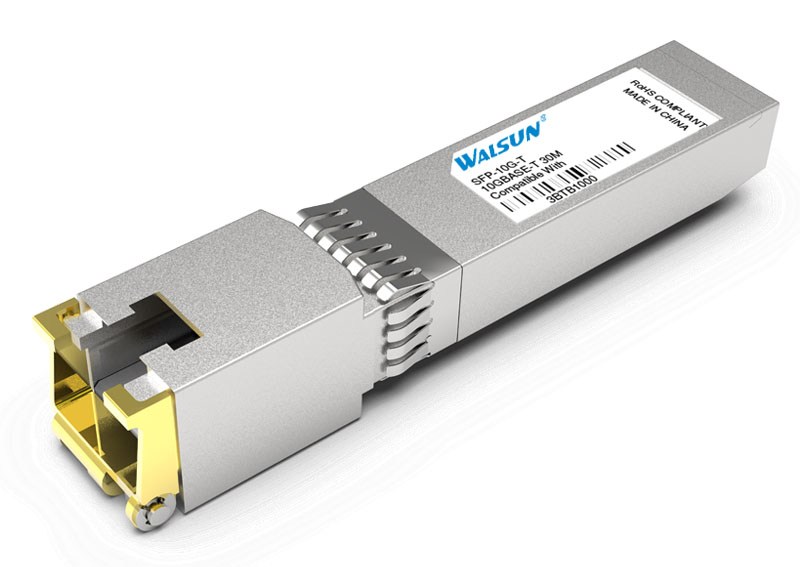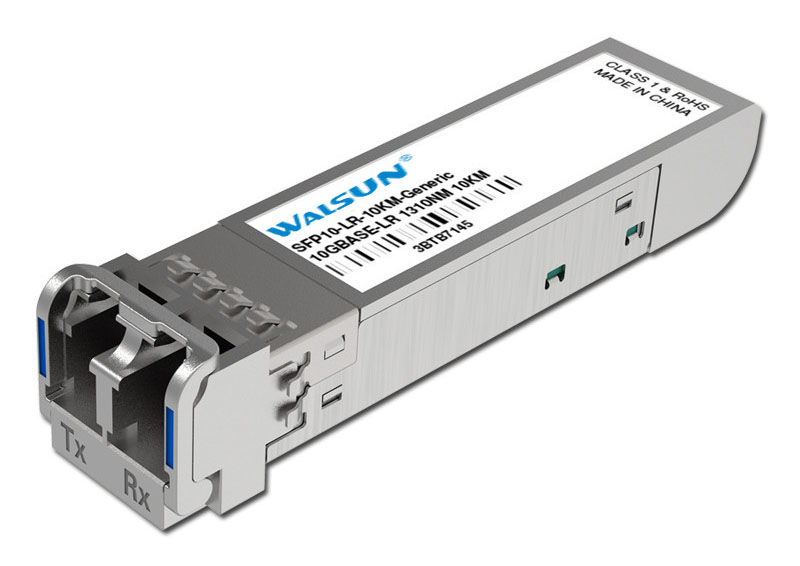

 Knowledge Base +
Knowledge Base +  2024.02.02
2024.02.02Optical modules are essential components in enterprise networking. According to different rates, encapsulation types and interface types, optical modules can be divided into different categories, one of which is the electrical port module. In the daily enterprise networking, compared with the widespread use of optical modules, electrical modules are not common, is it that the optical module is higher than the performance of the electrical module and lead to this phenomenon? The answer is no, because the performance of the electrical port module is no less than that of the optical port module, but also has unique advantages. The following article will share with you the knowledge and difference between optical and electrical port module fast:
⦁ What is an electrical port module
Electrical port module is also known as optical to electrical port module, which is a module that supports hot-swappable, SFP package form, the connector type is RJ45, and the transmission medium is UTP cable. Since Ethernet on UTP cable design transmission distance is generally less than 100 meters, so the electrical interface module is mainly used for short-distance data transmission.

Figure 1 Electrical port module
⦁ Application scenarios for electrical interface modules
The electrical port module can be directly inserted into the switch or NIC with 100M, 1G, 10G SFP ports, and directly use the existing UTP copper cabling system to achieve data transmission at a rate of up to 10G, connecting the server NICs and switches, avoiding the need for customers to invest in additional upgrades to the fiber optic cabling system.
⦁ Types of electrical port modules
According to the different rate levels of the electrical interface module can be divided into 100 megabit electrical interface module, Gigabit electrical interface module, 10 megabit electrical interface module.
1, 100 megabit electrical port module: the highest supported rate is 100M, usually used in 100 megabit SFP interfaces. Since 100BASE-T ports are mostly provided through the native RJ-45 ports of switches and NICs, the usage scenarios of this module are rather limited.
2、Gigabit power port module: the highest supported rate is 1G, usually used in Gigabit SFP interface. Gigabit Ethernet modules support a variety of different operating modes, usually including: SGMII to 10/100/1000BASE-T mode, and 1000BASE-X to 1000BASE-T mode, users need to choose different Gigabit Ethernet modules according to the type of switch used;
3, 10 Gigabit electrical port module: the highest supported rate of 10G, usually used directly on the 10G SFP interface, due to the fact that many switches / NICs now do not have native 10G-T RJ-45 interfaces, so it is necessary to use to the 10G SFP electrical port module to provide.
However, the 10Gb/s SFP module is currently limited by the power consumption of the PHY chip, the overall power consumption is still relatively large, at present, Motek can provide a minimum of 1.8W 10Gb/s SFP module products, which is at the world's advanced level, but it is still higher than the general power consumption of the optical module, so the application needs to take into account the switch's heat dissipation problems, and we recommend that the customer does not use more than one SFP module simultaneously on adjacent ports.
⦁ What is an optical port module
The optical port is the physical interface for connecting fiber optic cables, and the optical ports on the module are usually of several types, such as LC, SC, and MPO. Currently common optical modules are mainly SFP optical modules and QSFP optical modules, the rate ranges from 2M to 100G, of which the SFP module adopts a single-receiver/single-transmitter single-channel mode of operation, the industry can now provide a stable 25G rate SFP module products.QSFP module adopts a 4-receiver/4-transmitter four-channel mode of operation, the industry can now provide 4-channel merged 100G rate of the QSFP module adopts 4-channel operation mode of 4-receiver/4-transmitter.

Figure 2 Optical Port Module
⦁ Difference between electrical and optical modules
Different interfaces: The interface of the electrical port module is RJ45, while the interface of the optical module is mainly LC duplex, and there are also LC simplex and MTP/MPO interfaces;
With different: electrical port module is usually used with Category 5, Category 6, Super Category 6 or Category 7 cables, while optical modules are usually connected with optical patch cables, such as multimode patch cables OM3, OM4, OM5;
Parameters are different: electrical port modules do not have a wavelength, while optical modules do;
>>>Read More:What is the difference between OM5, OM3 and OM4?
Components are different: the components of electric port module and optical module are not the same, especially the electric port module does not have the core component of optical module - laser;
Additional Learning Hub Resources
Which Cat6, Cat6a, and Cat7 Ethernet cable is best for 10Gb?
Are 1.25G Optical Modules and 10G Optical Modules Compatible?
Subscribe to the newsletter
for all the latest updates.
2-5# Building, Tongfuyu Industrial Zone, Aiqun Road, Shiyan Street, Baoan District, Shenzhen. China
